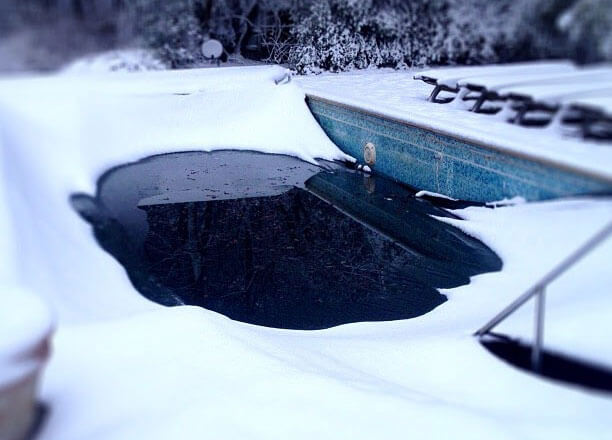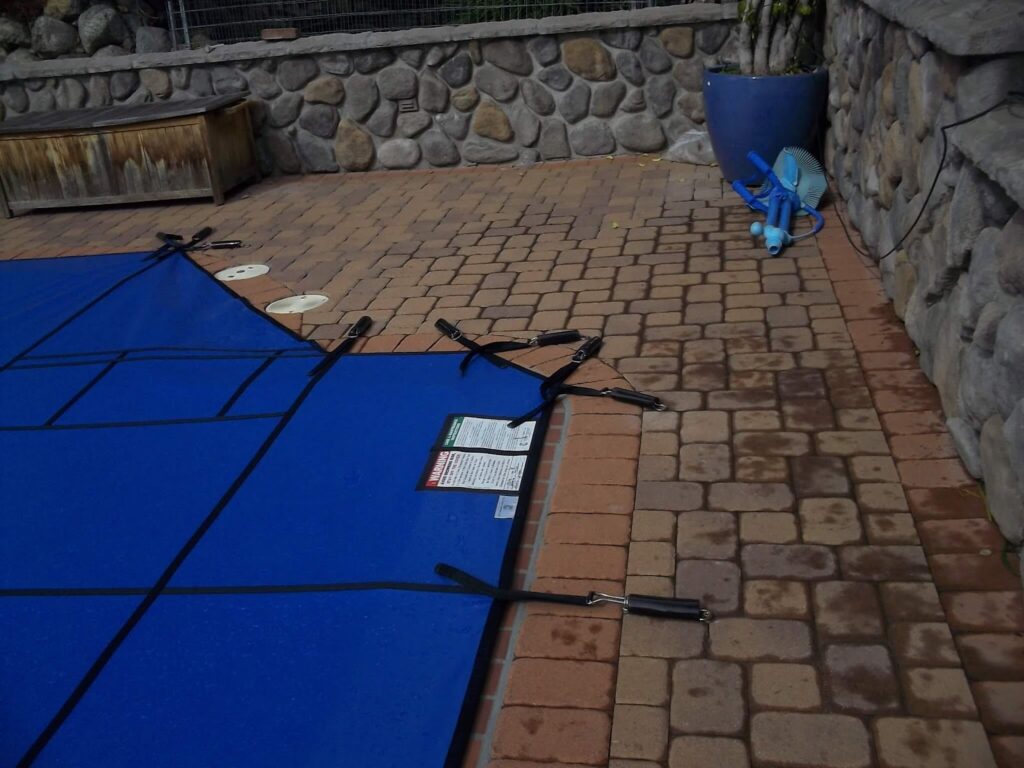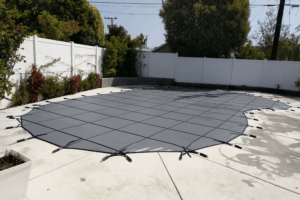
Pool Area Maintenance Tasks You Shouldn’t Skip
Even diligent pool owners miss key maintenance steps. Use this checklist to catch commonly forgotten tasks and keep your pool area safer and more efficient year-round.

You need to know how to keep your pool cover from sagging if you want to maintain a safer swimming pool area for your friends, family, and loved ones. In many cases, you just have to know how to tighten the straps on your pool safety cover, and it will be ready to keep protecting your pool. Sometimes, however, professional attention may be needed. Let’s take a look at the top reasons a pool cover can sag and what could indicate it’s time to call your neighborhood independent All-Safe Pool installer.
Swimming pool safety covers are designed to hold the weight of an adult to help prevent accidental drowning injuries. For full effectiveness, however, these covers need to be drum-tight, with only the slightest deflection or dip in the center of the pool. This tightness helps avoid water, snow, or debris gathering in the middle of the cover, adding to its weight in the event of an emergency, and also stores a certain amount of kinetic energy in the springs that secure the cover, pre-loading them to keep your loved ones safer.
In addition to the safety benefits, a tightened pool cover better protects the water from leaves, dirt, and debris slipping into the water around the edge of the pool. A tight cover is also better at redirecting precipitation away from the pool to better protect your chemistry and does more to limit evaporation. In short, knowing how to keep your pool cover from sagging not only can save a life but may help save you time and money in cleaning and sanitation as well.
When a professionally installed swimming pool safety cover or safety net is brand new, it gives a firm, tight appearance that stretches all the way across the pool providing the protection you need. Over time, as the pool cover protects your pool from the elements, winter snows accumulate before giving way to spring showers and summer thunderstorms, curious children play on it (even though you tell them not to), and the simple passage of time can start to take their toll.
When that happens, the center of the cover starts to dip lower, resting on the water more and more. This compounds the issues, as now gravity directs water and debris to the lower, flatter area, trapping it and increasing the stresses your pool cover is under. These stresses usually affect a few key areas causing the sag.

Adjusting your pool cover straps is a straightforward process thanks to the buckle design that secures your springs in a loop of strong webbing. Similar to the buckles you’ve likely seen on purses or backpacks, the strap webbing weaves through the buckle, looping back on itself, relying on the tension of these two layers to keep the buckle secure. Your cover’s spring attaches through this loop of webbing, so adjusting the position of the buckle and the strap passing through it is how to keep your pool from sagging.
When adjusting the straps on your pool cover, work with one strap at a time, making small adjustments and then checking the progress. Making too large of adjustments risks overcorrecting, potentially leading to damage. Simply slide the slack end of the strap toward the buckle, loosening the loop. You can now work the buckle closer to the cover or farther away, and you can create longer or shorter loops for the spring before tightening the strap back flat against the buckle.
While you may know how to keep your pool cover from sagging in most cases, sometimes a pro is needed for repair or parts replacement.
Your independent All-Safe Pool pro is ready to help you with adjustments, repairs, or replacements anytime your pool cover is sagging. Call and schedule an appointment, and they’ll come out to inspect the damage, lay out your options to restore your pool’s safety, and work fast to keep your pool protected. Make sure your cover is ready for action. Request a visit from your local All-Safe Pool installer today.

Even diligent pool owners miss key maintenance steps. Use this checklist to catch commonly forgotten tasks and keep your pool area safer and more efficient year-round.

Learn the most common pool winterizing mistakes and how to avoid them for a safer, cleaner backyard during the off-season.

Mesh pool covers offer reliable winter protection by keeping out debris and preventing accidents. Learn why they’re a smart choice for safety and peace of mind.
Enter your zip code to locate an independent installer in your area
Enter your zip code to locate an independent installer in your area
Their contact info will be shown on the next screen.
Due to the many variations in monitors, phones, and browsers, color samples and product examples may appear different on different screens. Computers and mobile devices are not all calibrated equally and color reproduction on the Internet is not precise. The same is true for printed items such as brochures and other sales literature.
In addition, the colors of our products photograph differently under different lighting conditions. For example, photos taken in full sunlight will vary from photos taken on a cloudy or overcast day. Similarly, shadows from nearby objects can affect the color and transparency of our products. If a precise color or specific shade is important, please inspect the actual color of your product prior to installation.
Many of our products’ materials are not available through typical stores and vendors and therefore must be custom manufactured specifically for our use. In order to control costs and provide you with the best value possible, our raw materials are produced in large batches and can often take several months to receive. The colors of our materials can, and often do, vary slightly from batch to batch. Although we make every effort to minimize color variations, we cannot be responsible for these differences when they occur. If a precise color or specific shade is important, please inspect the actual color of your product prior to installation.
For example, we use the name “putty” to describe some of our products. Your idea of the color “putty” may be different than someone else’s idea of “putty”. In addition, products may have the same color name but may not be the exact same color. For example, we have different shades of “black”. Please do not order using color names as your only guide. If a precise color or specific shade is important, please inspect the actual color of your product prior to installation.
If it is important that your product be an exact color or shade, it is highly recommended that you inspect the actual product prior to its installation and address any concerns with your local independent installer. Most independent installers do not offer refunds or accept returns due to color variations.